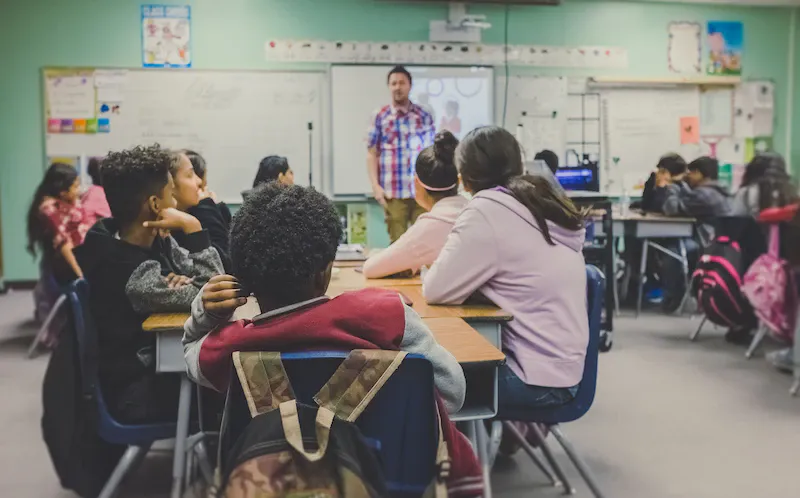Unlocking the Secrets of Flirting: A Comprehensive Guide

The Conundrum of Flirting: Understanding the Signs
Have you ever been in a situation where you’ve asked yourself, “Is this person flirting with me?” You’re not alone. It’s a universal conundrum that we’ve all faced at some point in our lives. But worry no more! Understanding the signs of flirting can help you differentiate between a friendly conversation and a potential romantic interest.
As a social anthropologist who studies flirting, I’ve been helping people become better flirts for over a decade. Flirting has changed dramatically in the last decade due to the increasing reliance on digital communication. However, at some point, you’re going to have to meet in person. That’s where my research comes in.
I’ve researched the flirting behavior of inhabitants in cities like London, New York, Paris, and Stockholm. And I found six things they all had in common. Six ways that they could signal they were flirting and understand when someone was flirting with them. I teach this as a hot tape – an acronym for the six signs of flirting.
The first sign is humor. It’s important to share a sense of humor with your potential hot tape. It helps you differentiate between a good match and a squirrel monkey. The second sign is open body language. It’s crucial to face the person and not do the ‘whiny voice aside.’ The third sign is touch. A safe place to touch is the shoulder, and the touch gets more intimate as you go down the arm.
The fourth sign is attention. The more attention someone is paying you, the more they like you. The fifth sign is proximity. If someone suddenly appears next to you, it’s not a coincidence. The sixth and the most important sign is eye contact. It’s the number one way to understand someone’s interest in you.
Using these six signs of flirting, you can recognize when someone’s flirting with you. Remember, it’s not about attracting everyone, but only those who match with you. As long as you follow the checklist and remember that you like test cricket, you’ll be fine.
So don’t worry about rejection or feeling self-conscious. Flirting should be fun and easy, and now you have scientific tools to help you. Don’t just recognize the signs of flirting, be proactive, and go hot tape someone.
The Evolution of Flirting: How Digital Communication Changed the Game
Over the last decade, the way we flirt has dramatically changed. With the rise of digital communication, people are relying more and more on online interactions to communicate their interest. However, emojis and texts can only get you so far in the flirting game. At some point, you’ll need to meet in person to gauge if there is any real chemistry.
As a flirtologist, I’ve done extensive research on flirting behaviors in major cities around the world, and I’ve found that while digital communication can be a useful tool, it’s not a replacement for face-to-face interaction. In fact, it can make things even more complicated.
When you’re flirting with someone online, it’s harder to read their body language or understand their intentions. You might think you’re flirting with someone, but they might not be aware of your interest. On the other hand, someone might be flirting with you, but you might miss the cues because they’re communicating through a screen.
That’s why it’s important to keep in mind the traditional flirting signals, like eye contact, touch, and open body language, even when communicating online. These signals can help you understand if someone is interested in you, and they can also help you express your own interest in someone else.
Of course, there are some differences between online and in-person flirting. For example, humor and wit can be more effective in digital communication, since you have time to craft the perfect message. However, the basic principles of flirting still apply, and it’s important to remember that online communication is only a stepping stone to real-life interactions.
In summary, while digital communication has changed the flirting game, it hasn’t replaced traditional flirting signals. If you want to succeed in the dating world, it’s important to understand and use these signals, whether you’re communicating online or in person.
The Power of Humor in Flirting
Humor is an essential aspect of flirting, and it can be a game-changer when used correctly. As humans, we are attracted to people who make us laugh, and humor is a universal language that can create a bond between two people.
As a social anthropologist who studies flirting, I have found that humor is one of the most effective ways to differentiate between potential hotapes and squirrel monkeys. While it’s essential to attract as many people as possible, it’s equally important to attract the right people. A shared sense of humor is a great way to find those who match with you.
But it’s important to understand that not everyone has the same sense of humor. What may be funny to one person may not be as humorous to another. So, it’s essential to use humor that aligns with your personality and style.
Humor can also be used to ease tension and create a relaxed atmosphere. When we’re nervous or anxious, humor can help break the ice and make us feel more comfortable. It’s also a great way to make a lasting impression and stand out from the crowd.
However, it’s crucial to use humor appropriately and not come off as insensitive or offensive. A joke that is too risque or inappropriate can quickly turn someone off and ruin any chances of a romantic connection.
In conclusion, humor is a powerful tool when it comes to flirting. It’s a universal language that can create a bond between two people and can be used to differentiate between potential hotapes and squirrel monkeys. But it’s important to use humor appropriately and align it with your personality and style. When used correctly, humor can be the key to making a lasting connection with someone special.
Understanding the Role of Body Language in Flirting
When it comes to flirting, body language can often speak louder than words. As a flirtologist, I have spent years studying the different ways in which people use body language to signal their interest to others.
One of the most important aspects of body language in flirting is open and relaxed posture. This means that you should avoid crossing your arms or legs, as this can signal defensiveness or disinterest. Instead, keep your arms and legs uncrossed and try to maintain an open and relaxed posture.
Another important aspect of body language in flirting is eye contact. When you are interested in someone, you should try to maintain prolonged eye contact with them. This can signal your interest and create a feeling of connection between the two of you.
In addition to open posture and eye contact, touch can also play an important role in flirting. Light, playful touches on the arm or shoulder can signal interest and help create a sense of intimacy between two people.
Of course, it is important to remember that body language can be subjective and context-dependent. What works in one situation may not work in another, so it is important to be aware of the social and cultural norms of the situation in which you find yourself.
In conclusion, body language is a key component of flirting and can be used to signal interest and create a sense of connection between two people. By being aware of your own body language and paying attention to the body language of others, you can become a more effective flirt and increase your chances of finding a meaningful connection with someone.
The Power of Touch in Flirting
Flirting is a complex and subtle art, and touch is one of the most powerful tools in a person’s flirting arsenal. It can communicate interest, attraction, and intimacy, and can also enhance the experience of a conversation or interaction.
There are many different ways to use touch in flirting, and each one can communicate a different message. For example, a light touch on the arm or shoulder can signal interest and attraction, while a more prolonged touch or hug can suggest a deeper level of intimacy.
However, it’s important to use touch judiciously and appropriately. Inappropriate or unwanted touching can be uncomfortable or even threatening, and can quickly turn someone off. It’s important to read the other person’s body language and signals, and to respect their boundaries and comfort level.
In addition to being an important part of flirting, touch is also an important component of human connection and communication in general. Studies have shown that touch can reduce stress and anxiety, increase feelings of trust and bonding, and even boost immune function.
So the next time you’re flirting with someone, remember the power of touch. Use it wisely and respectfully, and you may find that it enhances your connection and creates a more memorable experience for both of you.
Attention and Proximity: How They Signal Interest
When it comes to flirting, paying attention to someone and being in close proximity can be key indicators of interest.
First, let’s talk about attention. When someone is interested in another person, they will often give them their undivided attention. This means they will maintain eye contact, listen closely to what the other person is saying, and engage with them in conversation. On the other hand, if someone is not interested, they may be easily distracted, fidgety, or have wandering eyes.
In addition to attention, proximity is another important factor. When someone is interested in another person, they will often try to be physically close to them. This can be seen when two people lean in towards each other during conversation, stand close together, or even touch each other lightly on the arm or shoulder. However, if someone is not interested, they may stand farther away, turn their body away, or avoid physical contact altogether.
It’s important to note that attention and proximity are not always clear indicators of interest. Sometimes, people may be friendly or polite without necessarily being romantically interested. However, paying attention to these signals can help you better understand someone’s intentions and potentially avoid miscommunication.
Participant Observation: A Useful Tool in Flirting
Flirting is a complex and nuanced social behavior that can be difficult to understand and study. However, one technique that has proven to be useful in this area is participant observation. This involves immersing oneself in a social setting and observing people’s behaviors and interactions in that environment.
As a research tool, participant observation allows researchers to gain a more in-depth understanding of the context and dynamics of social interactions, including flirting. By observing people’s behavior in real-life situations, researchers can identify subtle cues and signals that may be missed in other research methods.
For example, a researcher conducting participant observation in a bar or club may observe how people position themselves in relation to others, how they make eye contact, and how they use body language to signal interest. They may also notice how people use humor or touch to initiate or respond to flirtatious behavior.
However, it’s important to note that participant observation requires researchers to maintain an ethical approach and obtain consent from the people being observed. It’s also essential to be aware of one’s own biases and to avoid interfering with the social environment being observed.
In summary, participant observation is a useful tool in studying flirting behavior. It allows researchers to gain a deeper understanding of social interactions and identify subtle cues and signals that may be missed in other research methods. However, it’s important to approach this research method with ethical considerations and a self-reflective approach.
The Hot Eight: A Checklist for Successful Flirting
Flirting can be a fun and exciting way to interact with others, but it can also be nerve-wracking and confusing. If you’re looking to up your flirting game, there are certain things you can do to increase your chances of success. In this post, we’ll go over the “hot eight” checklist for successful flirting.
- Eye Contact: Making eye contact is one of the most powerful ways to signal interest. It shows that you’re paying attention to the other person and are interested in what they have to say.
- Smiling: A genuine smile can go a long way in making someone feel comfortable and at ease. Smiling is also contagious and can help create a positive atmosphere.
- Body Language: Pay attention to your body language and try to mirror the other person’s movements. This can create a sense of rapport and connection.
- Sense of Humor: A good sense of humor is attractive and can help lighten the mood. Just be careful not to overdo it or use inappropriate jokes.
- Flattery: Complimenting someone can make them feel good and boost their confidence. Just make sure the compliments are genuine and not overly cheesy.
- Listening: Active listening is crucial in any social interaction. Pay attention to what the other person is saying and show that you’re interested by asking questions and responding thoughtfully.
- Confidence: Confidence is key in flirting. Be comfortable in your own skin and don’t be afraid to take risks.
- Respectful: Remember to always be respectful of the other person’s boundaries and feelings. If they’re not interested, don’t push it.
By following these “hot eight” tips, you can increase your chances of successful flirting and create meaningful connections with others. Remember, flirting should be fun and light-hearted, so don’t take it too seriously and enjoy the process.
Conclusion
Flirting is a complex and multifaceted social phenomenon. It involves a wide range of behaviors, including body language, verbal communication, touch, and humor. Successful flirting requires an understanding of the various elements that contribute to attraction and interest.
Through the exploration of different flirting techniques, such as body language, attention and proximity, touch, humor, and participant observation, we have gained a deeper understanding of the complex nature of flirting.
While there is no one-size-fits-all approach to flirting, the Hot Eight checklist provides a useful framework for those looking to improve their flirting skills. By incorporating elements such as confidence, humor, and listening skills, individuals can increase their chances of success in the dating game.
Ultimately, successful flirting requires a combination of self-awareness, empathy, and the ability to read social cues. By paying attention to both verbal and nonverbal communication, individuals can navigate the complexities of flirting and increase their chances of finding a meaningful connection with someone they are interested in.




